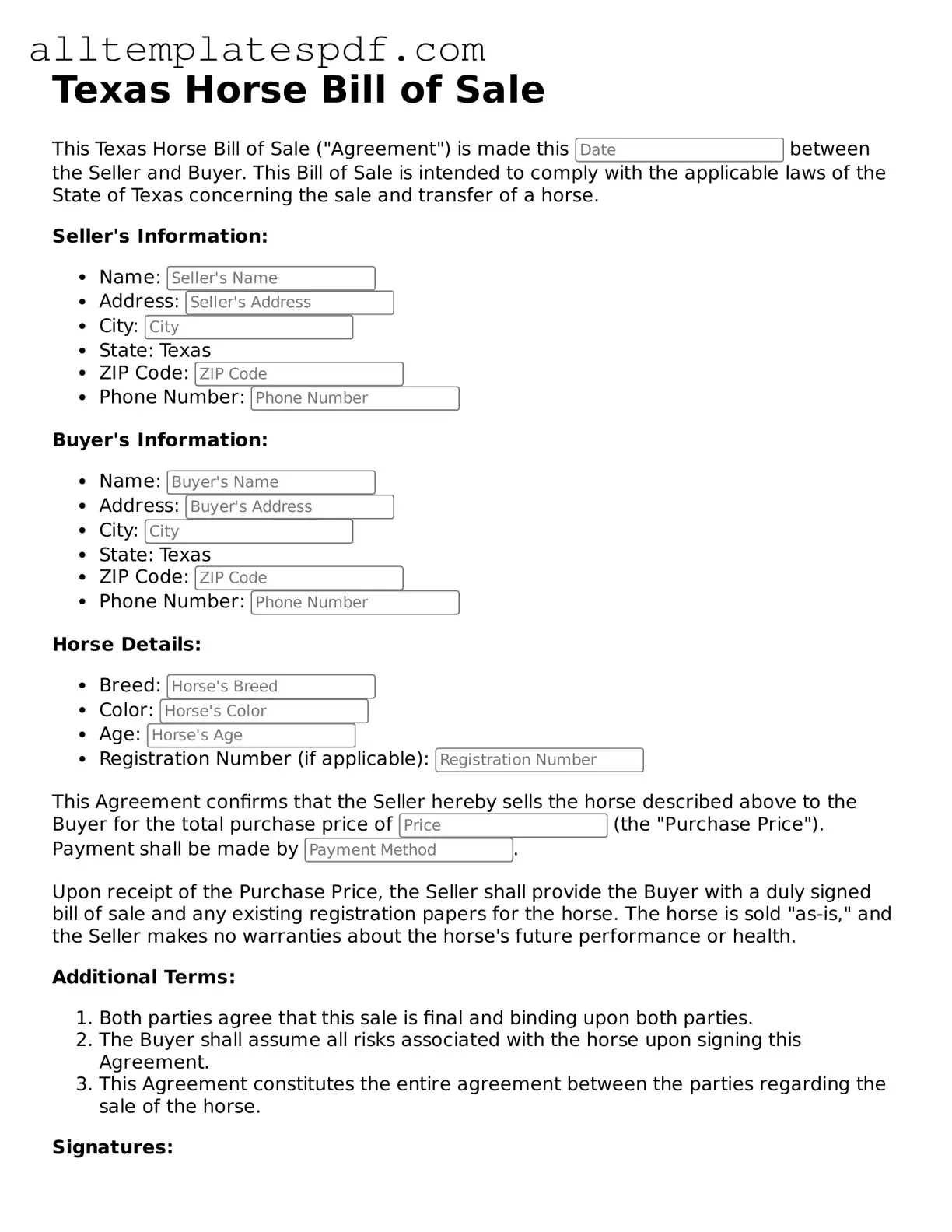Blank Horse Bill of Sale Template for the State of Texas
The Texas Horse Bill of Sale form is a legal document used to record the sale and transfer of ownership of a horse in the state of Texas. This form serves to protect both the buyer and seller by clearly outlining the terms of the sale, including the horse's description, sale price, and any warranties or guarantees. To ensure a smooth transaction, it is essential to fill out this form accurately and completely; click the button below to get started.
Open Editor
